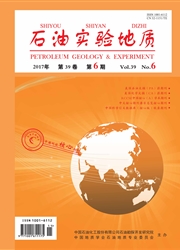

 中文摘要:
中文摘要:
渤海湾盆地边缘凹陷反映出盆地形成演化具有继承性、多向伸展、旋转走滑的被动裂谷性质。结合盆地主体凹陷的构造特点。总结出毓地新生代的裂陷作用是在区域构造应力作用和块体差异运动背景下发生的.在块体间不均衡向北推移引起向北伸展的同时,由于华北亚板块东西两端向北运动速率和距离的差异,引起板内的北西向拉张。在块体差异运动过程中,郯庐断裂起了走滑调节作用。渤海湾盆地的成盆模式可总结为:地壳拉张表壳破裂伸展和下岩石圈粘弹性流变减薄地幔上隆幔源物质侵入和部分熔融-(表壳上升剥蚀)-热沉降。
 英文摘要:
英文摘要:
According to the structural characteristics of brink sags in the Bohai Bay Basin, the formation and evolvement of the basin show the characteristics of passive rift basins, which are provided with inheritance, multi-direction extension and rotation strike-slip. In co-ordination with the structural characteristics of host sags, the rift-subsidence which occurred in Cenozoic in the background of area stress actions and fauh block movements in the Bohai Bay Basin is summarized in this paper. Together with the northward extension caused by the unbalance of fault-blocks moving northward, the northern plate extended north westward inner due to the difference of movement between speed and distance from the east to the west of the plate. During the differential movement of fault blocks tilting and extending process, the Tan-Lu fault belt adjusted in the strike-slip process and made shearing stress release effectively. At the same time, a series of strike-slip sags were formed along the fault belt. The formation model of the Bohai Bay Basin can be summed up as; the crust extension-the crust rift and extension as well as the sub-geosphere viscoelasticity rheid becoming thinner-the mantle uplift-the mantle plume invasion and melting-(the crust rise and erosion)-the thermal subsidence.
 同期刊论文项目
同期刊论文项目
 同项目期刊论文
同项目期刊论文
 期刊信息
期刊信息
